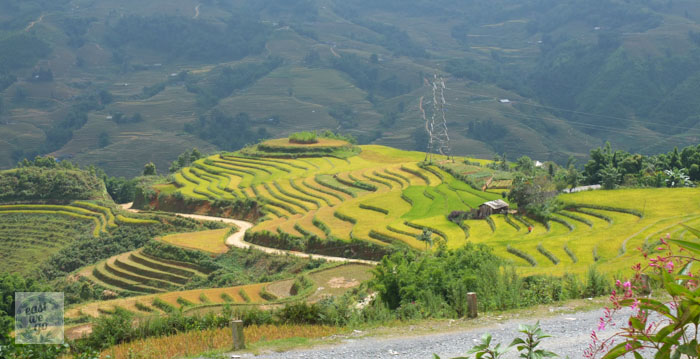
Sa Pa has three different faces to me. Three images, that mixed together made Sa Pa my favorite place in Vietnam and maybe even in the whole south-east Asia.
The first one is not very positive. It’s a town that is under construction, not pretty and not uniform. A town that got an unexpected influx of money, but doesn’t know how to use it. A town whose citizens suddenly, without wanting it, experienced a huge income of tourists, both from Vietnam and the whole world. The development of tourism that began in the 90’s and had its boom in the beginning of 21th century, changed Sa Pa beyond all recognition, but also influenced the ethnic minorities living in the neighboring villages. The women, who used to spend most of their time in the countryside, taking care of the household and helping in the field, discovered the urban life, where they can earn much more. Young girls left the villages and moved to Sa Pa, started earning their own money, be more independent, take advantage of new technologies, meet more people, also foreigners, became “modern”, yet also left the traditions of their families.
Not to mention all the villages around Sa Pa. Villages, that not that long time ago were not visited by any foreigners, where not everyone has electricity or running water and now there are crowds of young people from abroad come to watch their cows, chickens, take pictures of their hard work at the rice paddies. In a very interesting study about the women of Hmong ethnic minority, the author writes that the old generations are unable to understand why people spend money and time to see their houses and rice fields. They are still surprised that tourism bloomed so quickly. If you are interested in the influence of tourism on the young Hmong woman in detail, see this interesting work here.
Sa Pa, whose economy 30 years ago was based on small size agriculture, developed and modernized. There were many new hotels, restaurants, souvenir shops and tourist agencies opened. According to Wikipedia, the number of tourists between 1995 and 2003 grew from a total of 4,860 to 138,622 (!) and until now is surely much much higher. It’s an incredible change which was not intended or influenced by the local people. They just took advantage of the demand and started creating the whole touristic infrastructure practically from scratches. Did they do it well? Not really. New hotels are built without rhyme or reason, without any area development plan, with a flourish but also with limited funds. For instance our hotel, a soulless green concrete building located a bit far from the center where nobody spoke english. There were literally chickens running along with fast motorbikes one the streets and still it was already open and ready for the next wave of tourists coming soon in the next dry season. We also saw a construction of a new massive hotel on the verge of a hill that will be able to accommodate hundreds of foreigners. So what that the road leading to it is very narrow and extremely holey.


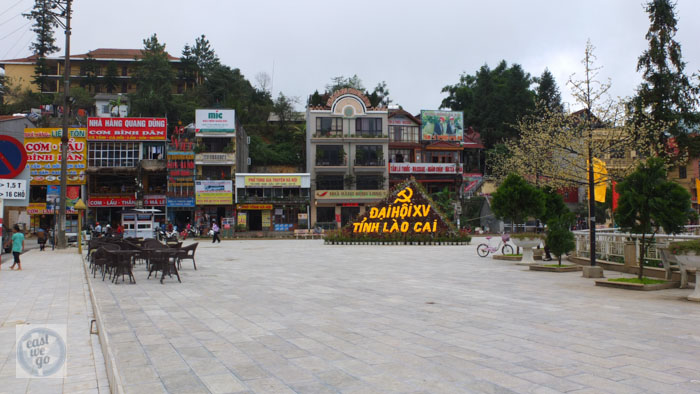

The second face of Sapa is a face of a cold, rainy town, covered with a dense fog that covers the ugly touristic infrastructure. A quiet town, almost mysterious, pretty. A town where still there are days without electricity where people eat dinners in restaurants by candles or noise of portable generators. Where the women from ethnic minority of Read Dao sit at the corner of the main square in the darkness, with head flashlights around their red turbans making traditional embroidery and handicrafts to sell to the tourists. The locals gather around small plastic tables, light little barbecues and get warm by the fire, eating and selling meat sticks. Where a couple of small souvenir shops tempt with their colorful, beautiful handicrafts. There, in the middle of summer, I felt like home during Christmas times, but with shorts and T-shirt. The lightened church and colorful lights on the trees, the neons of coffee shops and restaurants and small barbecues, the mist and the fog give Sa Pa a cozy, friendly touch.

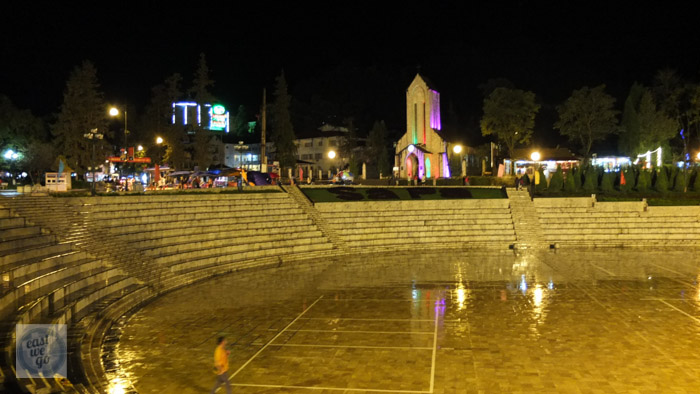
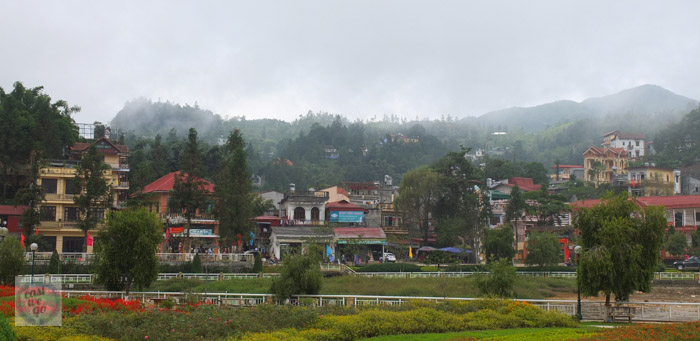
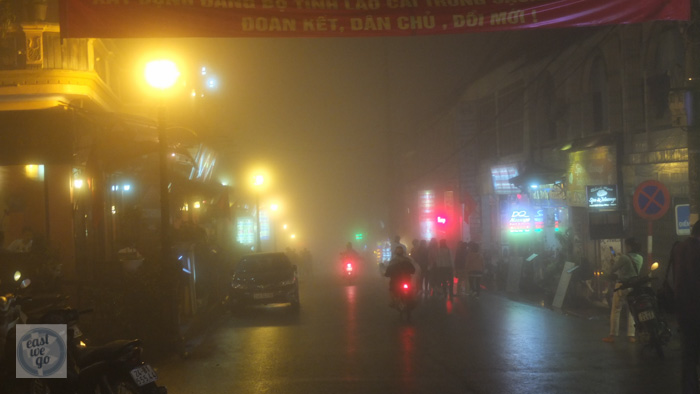
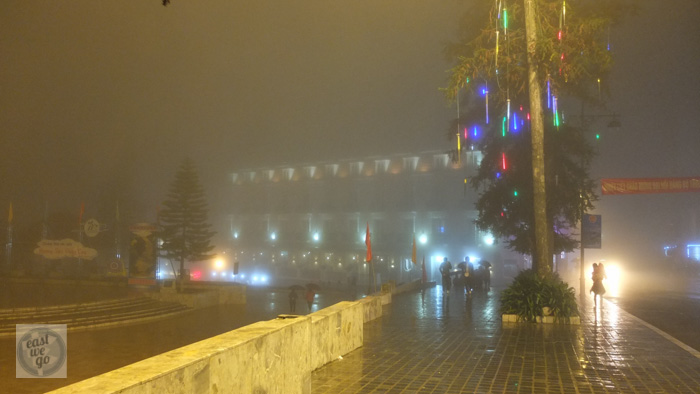

The third face of Sa Pa is the most beautiful and most authentic. It’s the face of Sapa, or rather its surroundings. Face of a town that lies at an altitude of about 1500 meters, bounded by valleys with steep slopes with rice paddies. A town with incredible views over the mountains, over the highest peak of Vietnam, Fansipan, 3143 meters high. A place where the green color has never been so intense. Where young boys riding water buffaloes and there are more children in the villages than adults. Going through narrow paths you need to watch your wheels, as the amount of farm animals wandering around is unbelievable. Small piggies, chicks, ducklings and kitties and puppies everywhere. The fertility is endless, everything is young, energetic and beautiful.
Everybody works on the rice fields, the youngest and the oldest, and when they see a smiling tourist waving at them, they will stop working and smile back. Although not always, sometimes especially the elder people look like they can’t understand our enthusiasm and admiration for something normal that they have had since ever. Being in Sa pa, we didn’t go for a popular trekking with a local guide and homestay in one of the villages. We preferred to stay away from the touristy paths and discover the countryside on our own. We rented a motorbike and we turned to every little paths, the most muddy tracks, we pushed the bike through rivers and holey bridges, slid on gravel, shook on holes and passed by many landslides with fear. However, thanks to that we saw a big part of the countryside around Sa Pa, took an immense amount of photos of mountains and rice fields. We had two wonderful day, during which we didn’t stop marveling at the nature.
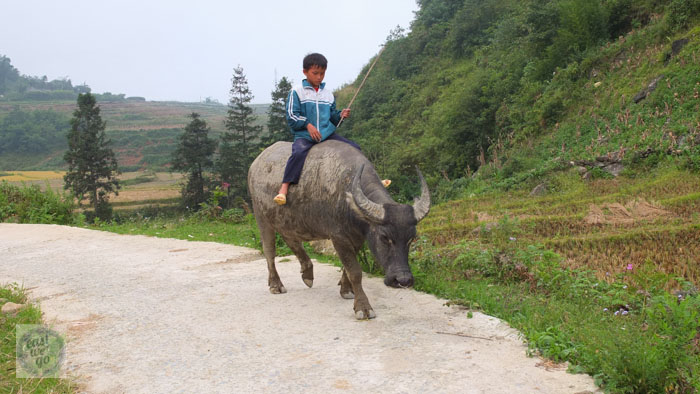


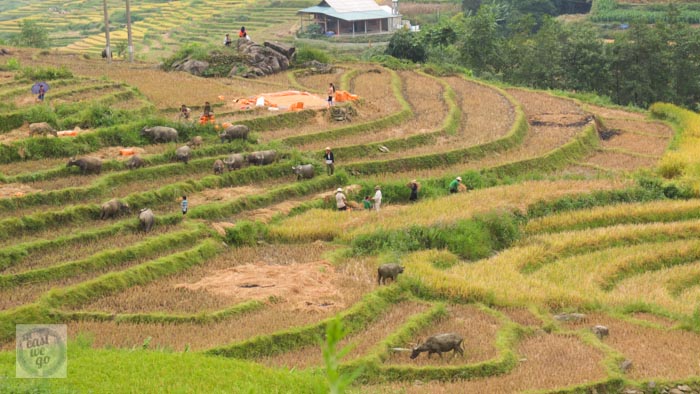
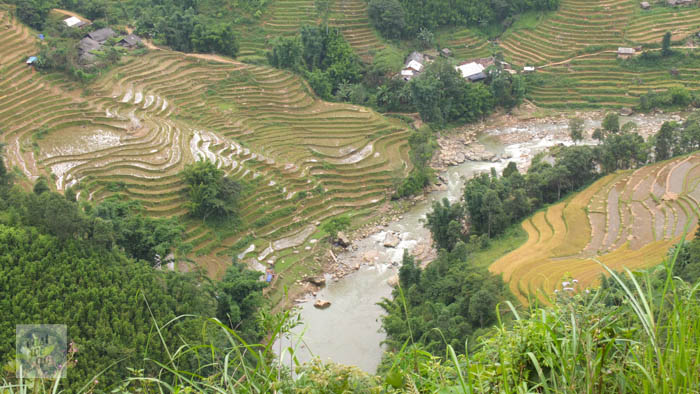
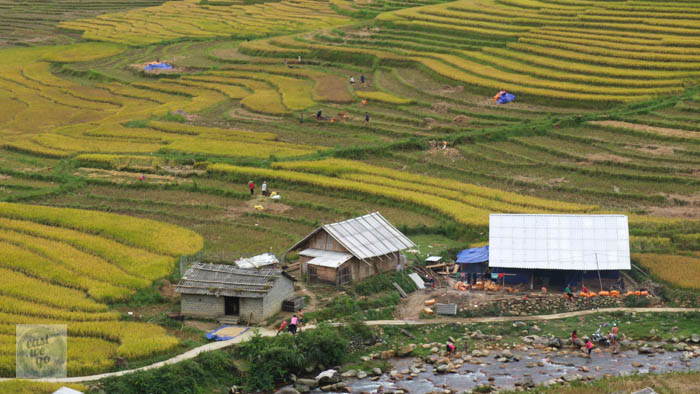



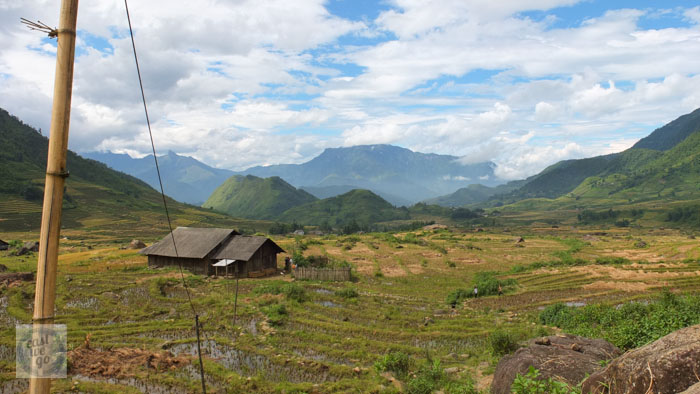
Magda
More photos from Sa Pa here.
 East We Go | Travel blog Travel blog about our adventures around the world
East We Go | Travel blog Travel blog about our adventures around the world
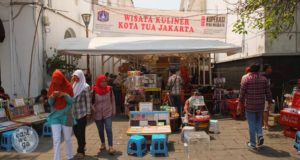

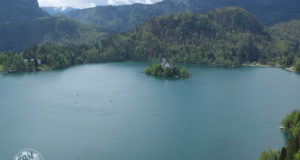
Jednak natura robi wrażenie wszędzie i to bardziej przyciąga turystów niż co innego 🙂
Kolejny inspirujący kraj. Na sam widok ludzi aż chcesz tam wyruszyć z marszu. No i ta zieleń…Sama zobaczyłabym pola ryżowe, nigdy nie widziałam! 🙂
Jakie świetne spojrzenie z trzech różnych stron na jedno miejsce! Pierwsze spojrzenie niestety smutne, ale tak to już jest przy “boomach”, ten negatywny wpływ turystyki. :/ Smutne i niestety często widoczne w różnych zakątkach świata. Dobrze, że coraz więcej ludzi “wchodzi” w propagowanie turystyki zrównoważonej. Ale fajnie, ze jednak da się odnaleźć w Sa Pie (nie wiem, dobrze odmieniam? :D) coś pięknego i urokliwego! 🙂
Dzięki! Tak, to prawda, Sa Pa nie jest jedynym przykładem szybko rozwijającego się miasteczka, które nie radzi sobie z napływem pieniędzy i turystów. Ale może uda im się niedługo nadrobić. Miejmy nadzieję, bo krajobraz mają jeden z najpięknieszych w Azji!
Ech, turystyczny boom. Zawsze staram się być daleka od oceniania tego, bo faktycznie – wszystkie te hotele i sklepy pod turystów, bez ładu i składu, potrafią zepsuć całą atmosferę miejsca, a wręcz je oszpecić. Tylko czy możemy zabronić miejscowym chcieć wykorzystać ten boom i zarabiać lepsze pieniądze, które mogą wykorzystać np. na edukację dzieci? Pytanie tylko czy ten boom się zaraz (za kilkanaście lat?) nie skończy i wtedy okolica zostanie z tymi okropnymi pułapkami dla turystów?